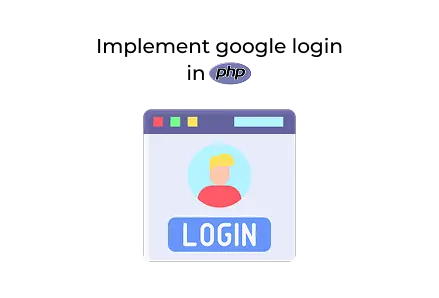Home - Scripts - Website Development

Google Login adoption enhances security and engagement, reduces password fatigue, and boosts retention, helping websites streamline authentication for millions of users globally.
Key Points
Google Login is one of the most popular authentication methods, allowing users to sign in with their Google account securely. Instead of memorizing multiple usernames and passwords, users can authenticate directly through Google OAuth, providing both convenience and security.
In this guide, we will walk you through the step-by-step process of implementing Google Login in PHP. You will learn how to configure Google OAuth in the Google Developers Console, set up a PHP backend to handle authentication, and retrieve user information for your application.
Whether you’re building a custom eCommerce website or a SaaS platform, integrating Google OAuth simplifies user authentication and enhances user experience.
Before writing any PHP code, set up Google OAuth in the Google Developers Console.
1. Go to the Google Cloud Console and create a new project.
2. Navigate to API & Services > Credentials.
3. Before creating credentials, set up the OAuth consent screen by providing application details such as:
4. Under Credentials, select Create Credentials → OAuth Client ID.
5. Copy the Client ID and Client Secret. You will need them in your PHP project.
Google provides an official PHP library to handle OAuth.
Install it using Composer:
This package helps you integrate Google OAuth easily, making it simpler to provide website development services with secure login features.
Now, let’s set up the Google Login feature in PHP.
This configuration file sets up the Google OAuth client.
This will generate a Google Login URL dynamically.
This script exchanges the authorization code for an access token, retrieves user data, and stores it in a session or saves it to your database. Hiring a skilled PHP developer can efficiently handle this for any custom website development project.
Start your local PHP server:
Google Login is not just a convenient option; it’s a robust authentication method that boosts modern PHP applications by:
At Digittrix, we focus on developing mobile and web apps that include secure authentication features like Google Login. You can also hire a PHP developer from our team to implement these solutions efficiently, ensuring your website remains secure and user-friendly.
If you’re planning to develop secure authentication, eCommerce platforms, or business dashboards, contact us today!

©2025Digittrix Infotech Private Limited , All rights reserved.